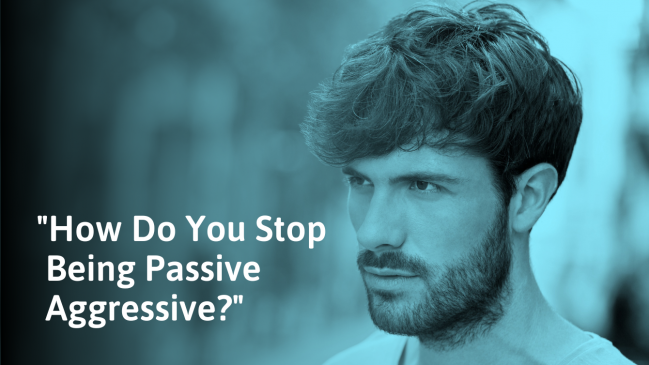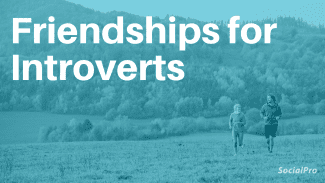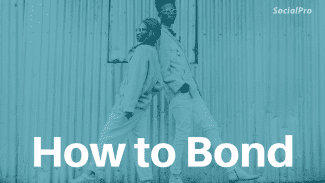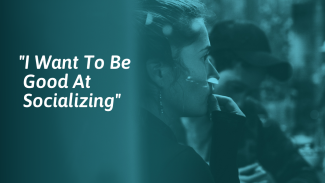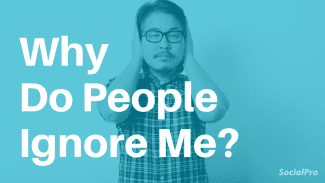You may have heard that being passive-aggressive is unhealthy, but what exactly does the term mean?
This article will explain what it means to be passive-aggressive. You’ll learn the common reasons behind passive-aggressive behaviors and how to stop using passive aggression in your relationships.
Sections
What is passive-aggressive behavior?
The Merriam-Webster definition of passive-aggressive is “being, marked by, or displaying behavior characterized by the expression of negative feelings, resentment, and aggression in an unassertive passive way (as through procrastination and stubbornness).”
In some cases, the person who is being passive-aggressive may not even be aware of the extent of their feelings. They may deny, not only to others but also to themselves, that they are angry or displeased at all.
Passive-aggressive behavior can look like sarcasm, withdrawal, backhanded compliments (e.g., “You’re so brave for wearing that”), manipulation, and controlling behavior. Sometimes, passive-aggressive behavior can show up as the silent treatment or gaslighting (a form of making someone question their reality).
For example, let’s say your friend insists that they’re OK following a disagreement and refuses to talk about it. Later, you see them uploading posts on social media that refer to things that sound suspiciously similar to what happened between the two of you. They may hint that they are hurt or upset. For example, they may share a meme that says, “I give and give, but no one cares about me when I am the one who needs something.”
Is being passive-aggressive a bad thing?
It can be frustrating to be on the receiving end of passive-aggressive behavior. Eventually, it may sabotage and destroy a relationship if it happens often enough. Here are a few examples of how passive aggression can play out:
- If someone behaves in a passive-aggressive way towards you, you feel as though they are gaslighting you, which can be upsetting. While passive aggression is usually not intentional gaslighting, you may feel gaslit when, for example, a man who looks angry insists that he isn’t mad or if a woman denies saying or doing something you witnessed her doing.
- When someone is sighing loudly, turning away from us, or rolling their eyes, we assume something is troubling them. If they deny that something is wrong, we may start over-analyze the situation to figure out what happened.
- When someone engages in passive-aggressive or “getting back” behavior, others tend to view them as petty or offensive, and everyone involved may end up feeling wronged. What may have been a simple disagreement or miscommunication may even end a friendship.
How to stop being passive-aggressive
The best way to eradicate passive-aggressive behavior, in the long run, is by developing healthier emotional habits. By becoming more assertive, learning to recognize and communicate your needs and emotions, and dealing with conflict, you will not need to resort to passive-aggressive behavior. You can also learn tools to manage your reactions when something upsets you in real-time.
1. Journal about your feelings
A regular journaling practice can help you learn to recognize your feelings, needs, and patterns of behavior.
When something upsetting happens, it’s easy to vent and focus on the other person (“they were so inconsiderate!”). You can get all that stuff out, but try to look deeper and ask yourself questions such as: what feelings came up for me when this happened? What significant memories are attached to these feelings? Consider how the other person may have felt when you reacted the way you did.
Journaling is a practice, so try to get into the habit of doing it several times a week or preferably every day. A good time to journal is in the morning before you start the day, but you can also journal to process your emotions after a significant event.
This article gives you more tips to improve your self-awareness.
2. Practice gratitude
Because passive-aggressiveness often originates from feelings of insecurity and jealousy, practicing gratitude regularly can help.
By learning to focus your attention on the positive things you have in your life, you will become less focused on the way you feel wronged by others. We have an article with different ideas for practicing gratitude.
3. Incorporate movement practices
Exercising can be a great way to reduce stress and improve emotional regulation. And when you’re more emotionally regulated, it’s easier to communicate your needs in a healthy, rather than passive-aggressive, way.
For example, a study that followed participants over eight weeks as they partook in aerobic exercise and yoga found that those who took part improved their implicit emotional regulation.[1]
4. Find healthy outlets for your emotions
Martial arts, dance, therapy, support groups, and painting can all be great ways to express your feelings that might otherwise come out as passive-aggressive behaviors. Making art can also be a great way to turn so-called negative feelings into something beautiful.
You might also like this article on healthy ways to express your emotions.
5. Seek help for codependency
Passive aggression can be a sign of codependency. Codependent people focus on other people’s needs and desires rather than their own. If you always put someone else first, you may become resentful and passive-aggressive.
If this sounds familiar, you might benefit from joining CoDA (Codependents Anonymous), a peer-led group with only one requirement for membership: “a desire for healthy and loving relationships.”
You don’t have to identify with all the patterns and characteristics of codependence or do the twelve steps to join. However, it may be helpful to listen to others as they learn to recognize their unhealthy patterns and learn to communicate and respond in different ways.
6. Join a Non-Violent Communication group
It’s easy to say that you should learn to be assertive and communicate clearly, but it’s hard to know where to start.
Marshal Rosenberg wrote a book called Nonviolent Communication: A Language of Life to help others learn how to communicate effectively and achieve better results in their relationships. The method focuses on identifying feelings and needs.
For example, instead of telling a friend, “Your comment was mean, but whatever,” you could choose to say, “When I heard you publicly comment about my food, I felt hurt and insecure. I need to feel respected, and I’d like it if next time you could give me this type of feedback one-on-one instead.”
You can find practice groups for Nonviolent Communication and other methods to improve communication (such as Authentic Relating and Circling) online and in groups such as Meetup.
7. Remind yourself that your needs matter
Overextending yourself and prioritizing everyone else might make you feel resentful and passive-aggressive. Don’t take on more than you can handle. When someone makes a request, take a moment to recognize what you’re feeling and needing at the moment and how you can communicate assertively.
8. Ask questions
We often make up stories in our mind, adding (negative) meaning to a simple sentence someone says. Misunderstandings can lead to hurt feelings, which can translate into passive aggression. Asking “why” or clarifying what someone meant before we respond can make a world of difference.
Asking questions can be an art, which is why we have a series of articles that can help you improve, including 20 tips to ask good questions.
9. Take time to respond
It’s completely OK to take some time to figure out your emotions. If someone says something that causes a strong internal reaction that you don’t know how to communicate in a healthy way, you can say something like, “This is important to me, and I don’t want to respond impulsively. Can I get back to you in an hour/tomorrow?”
10. Focus on I statements
Make sure you’re taking responsibility for your emotions. When people hear “You hurt me,” they may feel an urge to defend themselves, while I-statements like “I’m feeling hurt right now” is more likely to lead to a productive discussion.
Also, try to avoid using words like “always” or “never.” “You always do this” is more likely to get a negative reaction than “I’ve noticed this has been happening more often lately.”
11. Make room for another person’s perspective
Just as your feelings matter, so do the other person’s. It can help to validate emotions by saying something like, “I can understand you’re feeling upset right now.”
Validating someone’s feelings doesn’t mean you agree that you are responsible for why they feel that way or for making them feel better. Your coworker may feel understandably stressed, and at the same time, that doesn’t mean that you need to take on an extra shift. By making space for both perspectives to coexist, you both can win.
You might also find this article on having difficult conversations helpful.
What causes passive aggression?
Passive-aggressive behavior is usually due to an inability to clearly and calmly communicate emotions. There are many reasons why someone may develop a passive-aggressive communication style. These are the most common causes:
1. A belief that it is not OK to be angry
Passive-aggressive behavior is usually born out of a belief that being angry is not acceptable.
If you struggle with passive-aggressive behavior, you may have grown up in a home where you were yelled at or punished for showing anger (possibly even when you were very young and have no conscious memories or outside your home).
You may have grown up with an angry parent and sworn not to end up like them. When someone exhibits passive-aggressive behaviors, they usually think they are not acting in an angry or unhealthy way because they are not raising their voice or being intimidating. They may say that they are not an angry person or that they never get angry without realizing that their actions come across as intimidating.
The truth is that everyone gets angry sometimes. Recognizing and expressing anger can help you understand your boundaries and when they have been crossed.
2. Controlling or passive-aggressive parents
You may have unconsciously internalized your caretakers’ unhealthy ways of dealing with conflict, such as acting like a martyr, giving the silent treatment, or ignoring the problem. If your parents were very controlling, you may have needed to show outward compliance but felt resentment internally, which you were not allowed to show.
3. Insecurity
Passive-aggressive behavior can be born out of low self-worth, insecurity, and jealousy of others.
Sometimes people with low self-worth act as people-pleasers, saying yes to things they don’t really feel like doing. They then may resent the people who asked them for favors and those who do say no.
Thoughts like, “Why do they get to sit around while I do the work?” are common and may show up as passive-aggressive comments like, “Don’t get up. I’m fine doing everything by myself,” instead of asking for help or taking a break.
Low self-esteem is quite common, which is why we read and rated the best books to improve self-esteem.
4. Lack of assertiveness/conflict resolution skills
If someone does not know how to handle conflict or stand up for themselves confidently and assertively, they may react passive-aggressively because it is all they know.
Being assertive means telling the target of your anger or displeasure what you feel in a healthy way, without raising your voice, calling them names, or showing disrespect.
Some examples of being assertive are:
- “I understand that you’re short-staffed. I said that I need this day off weeks in advance, so I will not be able to come in.”
- “I know you’re trying to help, but I would prefer to handle this one myself.”
- “We agreed that one person cooks and the other does the dishes. A clean sink is really important to me. When can you get this done?”
5. Mental health or behavioral issues
A pattern of passive-aggressive behavior is not a mental illness. However, passive aggression may occur alongside mental health issues such as CPTSD/PTSD, ADHD, alcohol and substance abuse, depression, and anxiety disorders.
Someone who struggles with a mental illness may find it hard to recognize and regulate their emotions, which can lead to passive-aggressive behavior. They may also behave in more passive-aggressive ways during times of stress, particularly if they have not learned healthy coping strategies.
Common questions
What causes a person to be passive-aggressive?
Passive-aggressive behavior usually comes from insecurity, lack of communication skills, or a belief that showing anger is unacceptable.
Can a passive-aggressive person change?
Yes, someone who communicates in a passive-aggressive way can learn to change if they genuinely want to. Change occurs by working on unhealthy beliefs (“I shouldn’t have to ask”) and learning to recognize and communicate feelings effectively.
What are the characteristics of a passive-aggressive person?
Passive-aggressive people may be pessimistic, prone to procrastination, and struggle with identifying and expressing their emotions.
Why is passive aggression toxic?
Passive-aggressive behavior can get in the way of healthy relationships. Because it’s indirect, it leaves the other person confused. They will ask themselves if you’re truly upset or if they’re reading the situation wrong. The problem can’t be dealt with because it isn’t acknowledged.
Do passive-aggressive people feel guilty?
Some people feel bad when they react in passive-aggressive ways. However, others are not aware their behavior is harmful. Some think that it is justified.
